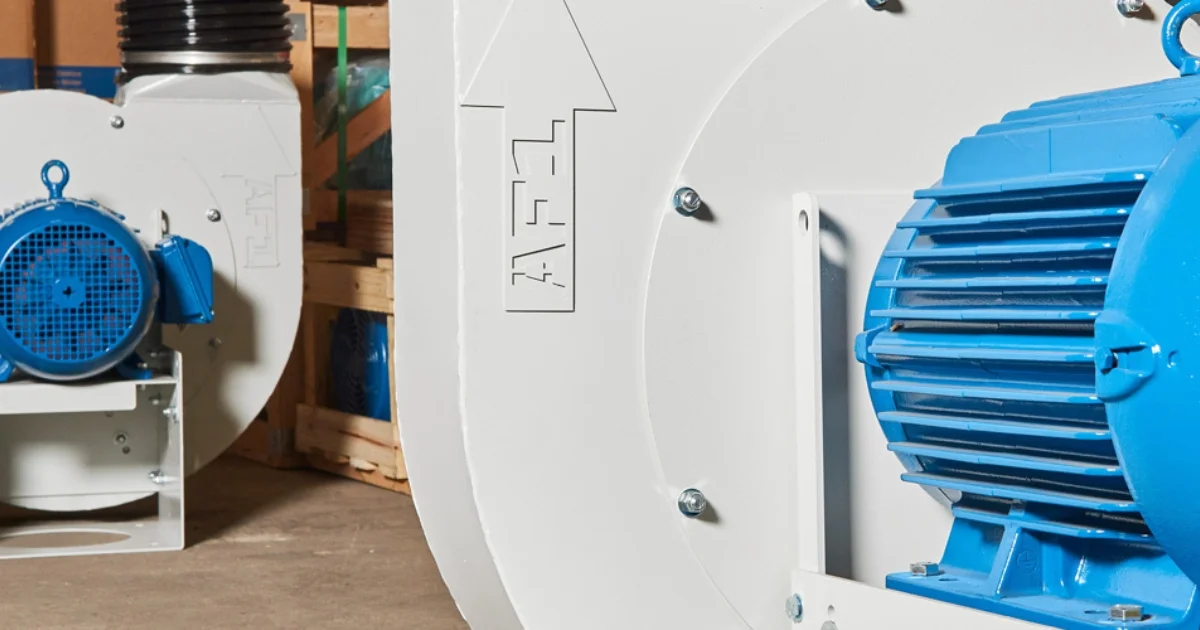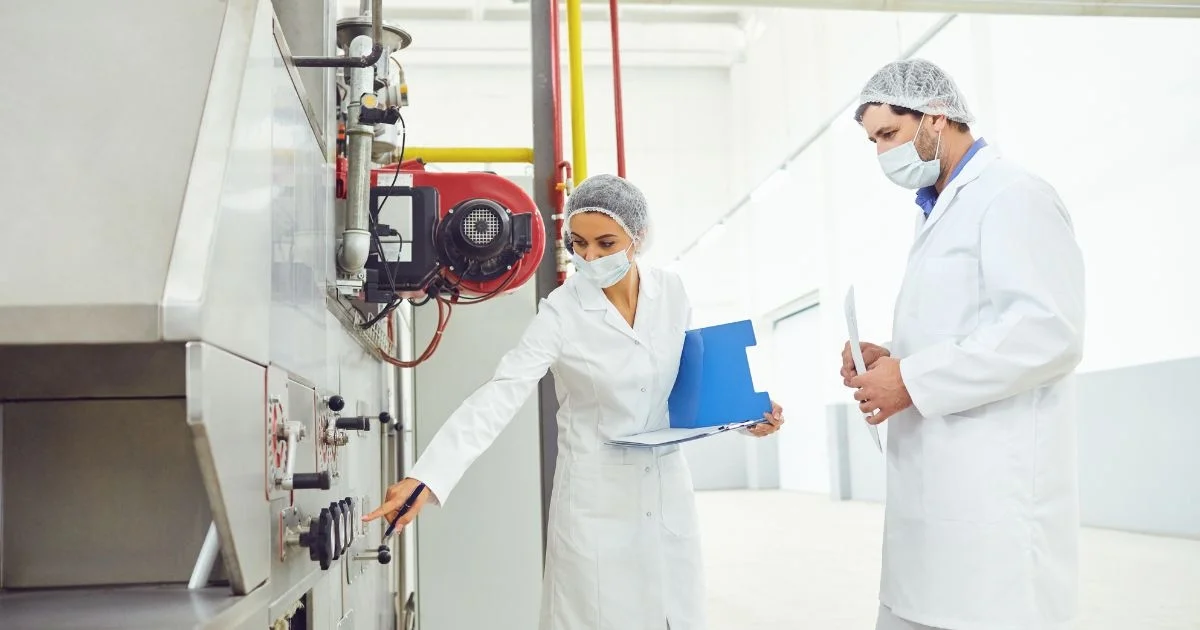
Suppose your business has applications that require continuous airflow for processes such as drying, cooling, and cleaning (i.e. blow off water, dust, and other contaminants). The type of air system you choose is essential. Unlike other traditional drying methods that meet the high-demand criteria for several industries, blow off systems are trumping their more common counterparts.
There are several options, but let's look at blow off systems vs. other drying methods such as compressed air, each of which technically works for applications that require:
Energy efficiency
Cost management
Specific Applications
Safety Enhancements
But what truly sets blower systems apart from the rest? That's the question Air Force 1 (AF1) is going to answer for you today. In this post, we'll be exploring how industrial blow off systems are superior to other, more traditional forms of drying methods and highlight the key areas that make them the right choice for the job.
Let’s look into blower-based drying, shall we?
What Are Blow Off Systems and How Do They Apply to Drying Applications?
Blow off systems are typically used to remove undesirable substances, such as liquids, dust, or debris, from parts or products during manufacturing, processing, or packaging. These machines utilize high-velocity air streams to “blow off” materials without the need for physical contact, making them ideal for delicate or even complex surfaces.
Blow off systems are usually used in manufacturing, processing, and packaging environments where dryness and cleanliness is essential.
How Do Blow Off Systems Work?
A typical blow off system consists of one or more air knives, air nozzles, or air jets that direct a controlled stream of compressed air or air generated by a blower onto the intended surface. The force of the concentrated, high-velocity air dislodges and removes any unwanted materials.
Depending on your desired application, the system can be customized to meet specific pressure needs, flow rates, and configurations to optimize their performance to your application.
Blow Off Systems in Drying Applications
Blow off systems, given their nature, make excellent tools to utilize in drying scenarios. A combination of high-velocity air and, in some cases, temperature control – a patented blow off system can do wonders when used in drying applications.
Product Drying After Washing
There are many industries, such as automotive, food and beverage, and even electronics, where products undergo washing or rinsing processes. After these processes, any residual moisture has to be removed before any further processing can be done, including packaging and product inspection, for example. Blow off systems are essential to removing this moisture without leaving behind water spots, streaks, or damage.
Surface Preparation for Coating or Painting
Before you apply any coatings, paints, or adhesives to your products, those surfaces must be completely dry and free of contaminants or debris. Otherwise, the quality is compromised. Blow off systems ensure that surfaces are completely prepped by removing all traces of moisture, dust, or particles. This results in better adhesion and a higher quality product overall.
Conveyor Belt and Component Drying
There are several manufacturing processes where components are moved along a conveyor belt, allowing moisture to accumulate on parts or even on the actual belt itself. Blow off systems are installed at strategic points along the conveyor to try both the components and the belt as they move along the line, ensuring both are dry by the time they reach the next stage of production.
Cooling and Drying in Food Processing
In food processing, there are plenty of situations where products have to be cooled and dried quickly to maintain their quality and food safety standards. Blow off systems can be used not only to rapidly cool and dry items like packaged foods, baked goods, or fresh produce before they're packaged and stored but also to remove access moisture.

Compressed Air vs. Blower-Driven Systems
Compressed air, as the name suggests, uses a compressed air tool to dry the products. This method usually consists of nozzles installed in the drying cabinet that direct compressed air at the parts to blow away moisture and debris.
Compressed air drying is typically used in small cabinet washers with low production cycles - but it has a high probability of increasing operational costs.
It can be effective, however, in addressing blind holes, cavities, or smaller features on parts.
On the downside, the energy and operational costs tend to be high, and their lack of high-velocity air means they can still leave behind residual moisture on the parts.
If your business is currently using compressed air to clean, dry, or cool down your products - your system may not be nearly as efficient as you think. According to Oklahoma State University, compressed air is considered one of the most expensive sources of energy used in food plants, with an overall operating efficiency of between 10% and 15%.
In many other applications, it's worthwhile to convert to blower-based air systems to increase efficiency and lead to long-term cost savings.
Blow off of water, dust, debris, and other contaminants, as well as drying, cooling, and heating, can all be achieved by either compressed air or blow off systems respectively; however, there are several deciding factors to take into consideration when determining which system is going to be best for your respective application.
Each system will suit your business application, usually determined by existing infrastructure.
Blow off systems are consistently more energy efficient when a continuous airflow is required. They've been noted to reduce energy costs by up to 80% compared to traditional compressed air methods. These significant savings mean blow off systems usually offer a higher return on investment (ROI).
To be fair, there are situations where airflow is only required sporadically or in short bursts, meaning a compressed air system could be more than suitable. However, blow off systems have greater overall versatility and can be used in place of most air compression systems.
A general guideline for estimating compressed air consumption is to calculate 1m³ = 0.11 kW. This refers to calculating the volume of air (1 cubic meter, or 1m³) required for a specific amount of power (0.11 kilowatts, or kW) to achieve an effect such as heating, cooling, or moving air.
Other Forms of Drying During the Manufacturing Process
We’ve spoken about the most common comparison of compressed air systems vs. blow off systems - but there are other forms of drying that you can see during the manufacturing process. Briefly, we’ll explore these other options and compare them to blow off system applications:
Ambient Drying
Best for situations where the dryness of the product isn't critical and time isn't a major concern, utilizing the residual heat from the cleaning process can allow liquid to evaporate on its own, leaving the surface dry. Washing at higher temperatures can increase evaporation and accelerate ambient drying.
This process is generally most suitable for situations that require only low production rates with some semblance of moisture tolerance without requiring an extra cost. However, parts with cavities will require manual intervention with either a vacuum air gun, compressed air, or a high-velocity blow off system.
Vacuum Drying
The vacuum drying process involves using a vacuum pump to reduce the ambient pressure surrounding the product that requires drying. This pressure reduction lowers the boiling point of the water within the product, enhancing the remaining liquid's evaporation rate.
Parts are placed in a vacuum chamber, and the pressure is reduced to between 5-10 Torr/ (mmHg).
MmHq refers to a pressure measurement used in vacuum pressure. This pressure causes water to boil at an ambient temperature and evaporate, ensuring the product is thoroughly dried, even in hard-to-reach places.
Vacuum drying is usually good when parts need to be 100% dried – no questions asked. In order to achieve this level of dryness, it's necessary to remove all excess moisture before the parts move on to other processing.
However, to truly maximize this drying method, it's often recommended to use high-velocity blow off before vacuum drying. The main drawback to this method, however, is that it tends to come with a high upfront equipment cost.
Why Choose Blow Off Systems from AF1
Founded in 1990, Air Force 1 (AF1) specialized in designing and manufacturing blower-generated blow off systems suitable for several industries, such as industrial manufacturing, assembly, food and beverage, defense, and packaging.
Our products are crafted with precision and innovation, thanks to a diverse team of talented professionals who handle everything from design and engineering to manufacturing and installation.
Our expertise spans a wide range of products and applications, including:
Air Cannon Nozzles
Air Knives
Direct Drive Blowers
Static Control Systems
Drying Systems
Neutralizing Solutions
Cooling Stations
Air Seals
Coatings Control
Blower Sound Control Enclosures
Bottle Drying
Liquid Removal
Shot Blast Media Cleaning
Feather Dusters
Want a quote today? Choose the blower-based drying system best suited to you and your business. Don't rely on inadequate forms of drying for your production line – trust in the versatility and sustainability of blow off systems. Contact us to get a quote.

